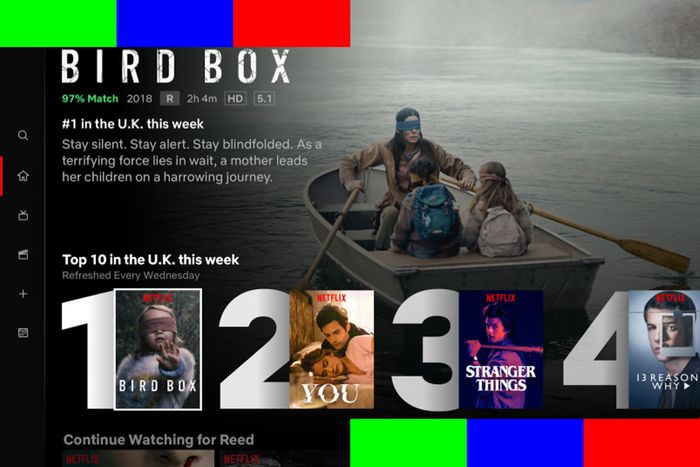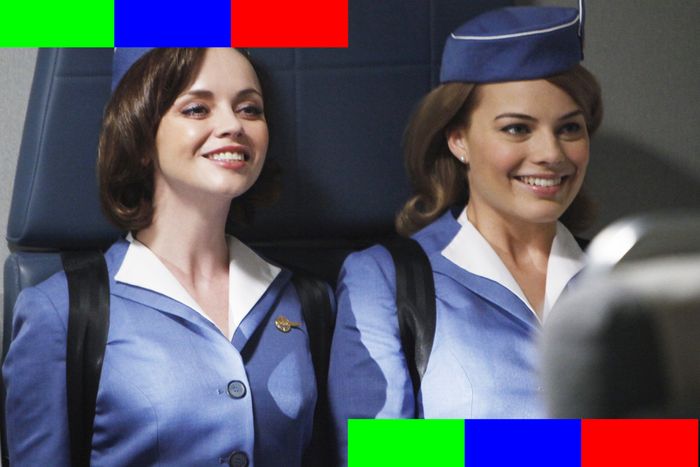
Roku is finally ready to kick start its big Quibi-fied push into original content. Following weeks of buildup, the streaming platform this morning said the first batch of programs acquired from Jeffrey Katzenberg’s shuttered short-form service will debut a week from today. And just like the OG Quibi, there will be a lot of content available at launch. The details, direct from Roku:
• A whopping 30 titles will debut on the platform’s Roku Channel on May 20, which also happens to be the made-up holiday of National Streaming Day. As previously announced, these former Quibi shows will now be branded Roku Originals.
• The initial selection of shows will pull from a variety of genres, including unscripted (Chrissy’s Court, Gayme Show), comedy (The Reno 911! revival, Kevin Hart’s action-oriented Die Hart), drama (#FreeRayshawn) and docuseries (The Shape of Pasta).
• All existing episodes of each series will drop at once, rather than rolling out daily (like Quibi) or weekly. Quibi episodes were pint-size and Roku plans to keep the commercial load on these shows relatively light. Per Sweta Patel, Roku’s VP of engagement growth marketing, there will be “short ad breaks of less than a minute between each 8-12 minute episode of a show.”
• The new Roku Originals will be available to audiences in the U.S., Canada, and the United Kingdom at launch. You don’t need to own a Roku device to watch, either, since Roku Channel exists as a website and an app on multiple platforms, including Amazon’s Fire TV, certain Samsung smart TVs, and on Apple and Android mobile devices.
• Roku hasn’t said exactly how many titles it bought from Quibi, indicating only that it has access to more than 75 different projects. Patel says the company decided to premiere nearly half of them at once so that it could offer “a lineup that appeals to a broad range of streamers.” The other 45-plus titles — including a dozen that never found their way onto Quibi — are expected to debut before the end of 2021.
Behind the strategy: The former Quibi shows are part of a broader content strategy for Roku Channel, one where originals are important but not as central as with some other services. In recent months, the streamer acquired the international drama Cypher for its U.S. and Canadian audiences and struck a deal for past and future episodes of PBS staple This Old House. But unlike Amazon’s IMDb TV, Roku doesn’t seem poised to start green-lighting dozens of network-style comedies and dramas anytime soon.
Instead, company execs have made it clear they plan to take a more targeted approach, striking programming deals which are cost-efficient relative to Roku’s Channel’s aggregate audience. Rather than deficit spend its way into the originals game, the streamer will budget only what the ad marketplace will support. Of course, if Roku Originals result in explosive audience growth for Roku Channel, and more ad demand, then it’s a good bet the company will invest more heavily in originals over the next few years.
Will it work? Quibi became a punchline for comics and folks on social media, but it wasn’t because the content was awful. The service sank because the idea people would pay for a mobile-only subscription service was simply (tragically, horribly) flawed. But Roku Channel is doing what Quibi should have done from the start — making its shows available for free and on multiple devices. And unlike Quibi, Roku Originals will be available in tens of millions of homes on day one. Launching with over two dozen shows at once is also smart because it will allow Roku subscribers to sample a broad selection right away. It’s not dissimilar to what broadcast networks do with fall-premiere week, turning the arrival of a bunch of new programming into an event.
The ex-Quibi content will also get the advantage of Roku’s primo marketing platform. Roku streaming devices are in tens of millions of U.S. homes, and the launch page from which users access apps such as Netflix or Hulu is some of TV’s most valuable real estate. You can bet Roku users will be seeing lots of promos for Roku Channel originals, literally putting titles such as Chrissy’s Court just a click away. Companies like Disney pay big bucks to advertise their programs on the Roku start page. Now Roku has premium content of its own to hype, and its ability to do just that gives its original content a big leg up in the battle to get seen.
Indeed, the promo blitz has already started. Minutes after the official launch date announcement, Roku blasted out an email to millions of users letting them know the former Quibi shows were on their way. And interestingly, Roku leaned into whatever brand awareness the defunct mobile streamer still has: “Quibi favorites are now free Roku® Originals,” read the subject line of Roku’s missive. Inside, the company told users the new Roku Originals “are your chance to enjoy your favorite Quibi shows again and discover new ones.” I actually expected Roku to play down the Quibi connection, but I guess it can’t hurt to draw a connection to an effort which, while it failed, generated a ton of news coverage.
The Real Story Behind Netflix’s Top Ten
Netflix’s personalized recommendation engine is the stuff of legend — and also pretty divisive. The company is proud of its highly sophisticated algorithm, which uses a mix of machine and human intelligence to help users sort through the thousands of titles on the platform. But not everyone is a fan: Some people think the process prevents folks from finding good shows and movies by “hiding” stuff they might actually enjoy. While Netflix isn’t about to ditch a system that has served it incredibly well, the company is increasingly looking to give users options for navigating its content that don’t involve the mighty algorithm.
Today, in the second part of my series going behind the scenes at Netflix’s product-development process, I explore the most significant effort yet to emphasize so-called “objective” discovery tools: the top-ten lists, which were rolled out globally about 15 months ago. As with the recently launched Play Something shuffle feature, Netflix spent years working on the introduction of these lists, going through several iterations before settling on the right format. But it’s not done honing the top tens:
Instead of simply showing you rankings based on where you live, Netflix might one day give users the option of scrolling through what’s hot in different regions of the world, or even the ability to get hyperlocal (say, the top ten in Queens vs. Brooklyn). The company has even thrown out the idea of tying the lists to current events: During the World Cup, Netflix could show you what was popular in all of the countries participating in the tournament … They’ve also explored giving some folks a top 20 or top 50, or rankings of the most thumbed-up titles.
Netflix also wants to make it easier to find out which shows on the service are new or are performing particularly well with subscribers. Late last year, it introduced a section on its homepage called New and Popular, and it is currently working on a substantial redesign of the feature. The new format is expected to start testing in the next month or two, but my story also previews some of the ideas the company is exploring.
One thing that came up again and again during my interviews with Netflix execs is that the company does its best not to be dogmatic about the design of its user interface. Todd Yellin, a top exec on the product side, told me they have been giving more space to features such as the top tens because they realized not everyone is going to respond to personalized suggestions, at least not all the time. “Different people want different experiences,” he told me. “If you look at where top ten appears on the homepage, for different people, it’s not always in the same place. Some people are going to lean on it a lot and some people, that’s not their thing at all.” The key, Yellin says, is to make sure both kinds of discovery tools are available: “It’s a complementary strategy. This isn’t one thing replaces the other.”
You can read my full report here. And if you missed it, part one of the series is here.
Pan Am Takes Off … Again
Four years after Mad Men became a buzzy success story for cable’s AMC Network, ABC in 2011 tried to ride the retro zeitgeist by green-lighting its own attempt at ’60s chic, the very short-lived Pan Am. At the time, the folks behind the Alphabet series scoffed at the notion the two shows were related. “It has nothing to do with Mad Men,” producer/director Thomas Schlamme insisted back then. Clone or not, the show failed to take off: It lasted just one season, even with a loyal cult following, some innovative marketing and a cast that included Christina Ricci and future film superstar Margot Robbie. But a decade later, any disdain AMC execs felt for the show is apparently ancient history.
Early last month, all 14 episodes of Pan Am began streaming on AMC+, the company’s premium subscription streaming service. What’s more, the streaming skies are apparently proving quite friendly to the drama: Since it was added last month, Pan Am has regularly ranked among the top ten titles on AMC+ among subscribers who access the service via the Apple and Amazon channel platforms, a rep for the platform tells Buffering. The series was first acquired by AMC Networks-owned Sundance Now, but since AMC+ includes everything on Sundance Now, subscribers of both services have access to the show.
One thing that may be boosting Pan Am a bit: AMC+ streams all episodes of Mad Men as well as another Sony-produced period drama, Amazon Prime Video’s dearly departed Good Girls Revolt. It’s not hard to imagine folks interested in Mad Men (a top-five title on AMC+) checking out the clones — er, tributes to the original. Now if only AMC+ (or some streamer) would add reruns of the even shorter-lived ’60s salute, NBC’s The Playboy Club. Actually, that show can stay buried. As I suspected when I first saw a trailer for it, it turned out to be really bad.



